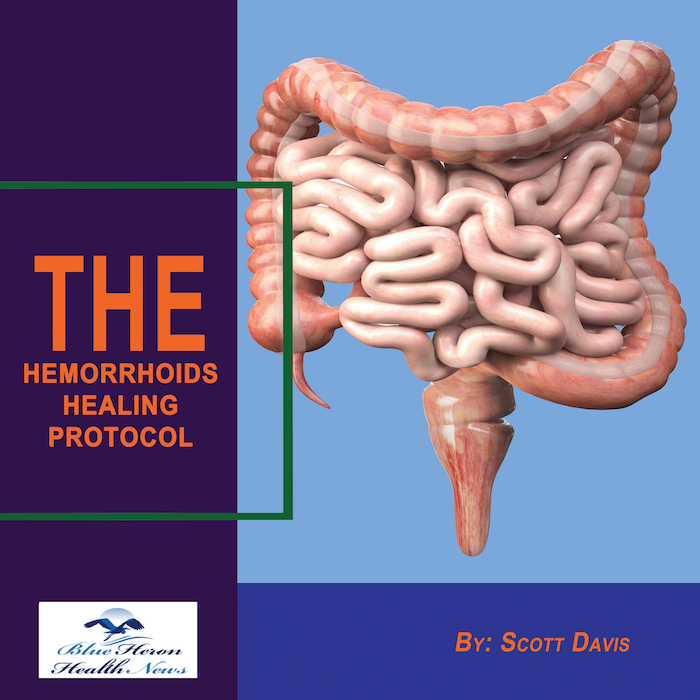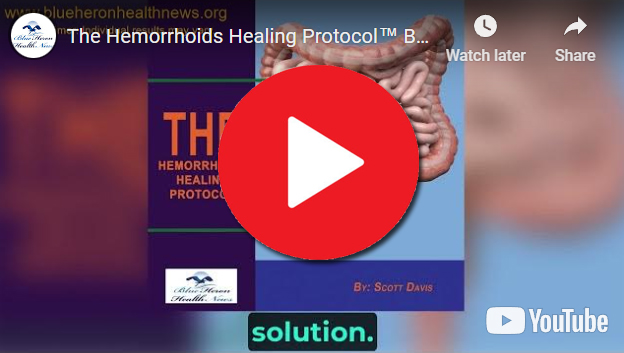
The Hemorrhoids Healing Protocol™ By Scott Davis Hemorrhoid healing protocol is a three-week online program that helps in treating and reducing hemorrhoids. It teaches gentle recipes and movements, natural and effective remedies that help in treating hemorrhoids.This program is not like the usual prescription medicines, it is a hell of a lot more than just those drugs. It focuses more on elevating the two main not so good habits that are connected to the Hemorrhoids. Overall the sole motive of this program is to remove the problem from its root instead of just treating the symptoms.
What are the different types of hemorrhoids?
Types of Hemorrhoids
Hemorrhoids, also known as piles, are swollen veins in the lower rectum and anus. They can cause discomfort, pain, itching, and bleeding. Hemorrhoids are classified into different types based on their location and symptoms. Understanding the different types of hemorrhoids is crucial for proper diagnosis and treatment. Here is a detailed overview of the various types of hemorrhoids:
1. Internal Hemorrhoids
Location:
- Inside the Rectum:
- Internal hemorrhoids develop inside the rectum, above the pectinate line (an anatomical demarcation in the anal canal).
Symptoms:
- Painless Bleeding:
- Internal hemorrhoids often cause painless bleeding during bowel movements. Blood may appear on the stool, toilet paper, or in the toilet bowl.
- Prolapse:
- Larger internal hemorrhoids may prolapse, or protrude, outside the anus, especially during straining. Prolapsed hemorrhoids can cause discomfort and irritation.
- Mucous Discharge:
- A mucous discharge may occur with prolapsed hemorrhoids, causing irritation and itching around the anus.
Grades of Internal Hemorrhoids:
- Grade I:
- No prolapse. Hemorrhoids remain inside the rectum and may cause occasional bleeding.
- Grade II:
- Prolapse during straining but spontaneously retract.
- Grade III:
- Prolapse during straining and require manual reduction to return inside.
- Grade IV:
- Permanently prolapsed and cannot be manually reduced. These may become thrombosed or strangulated, causing significant pain.
2. External Hemorrhoids
Location:
- Outside the Anus:
- External hemorrhoids develop under the skin around the anus, below the pectinate line.
Symptoms:
- Pain and Discomfort:
- External hemorrhoids can cause significant pain and discomfort, especially when sitting or during bowel movements.
- Swelling:
- Swelling or a lump around the anus is a common symptom. The lump may feel hard or tender to the touch.
- Itching and Irritation:
- The skin around the anus can become irritated and itchy.
- Bleeding:
- External hemorrhoids can bleed, especially if irritated by wiping or straining during bowel movements.
- Thrombosis:
- External hemorrhoids can become thrombosed when a blood clot forms inside the hemorrhoid. Thrombosed hemorrhoids are particularly painful and may appear as a hard, bluish lump.
3. Thrombosed Hemorrhoids
Location:
- External or Internal:
- Thrombosed hemorrhoids can occur in both external and internal hemorrhoids but are more common in external hemorrhoids.
Symptoms:
- Severe Pain:
- Thrombosed hemorrhoids are extremely painful due to the presence of a blood clot. The pain can be sudden and intense.
- Swelling and Inflammation:
- Significant swelling and inflammation around the affected area.
- Bluish Discoloration:
- The thrombosed area may appear bluish or purplish due to the trapped blood.
Treatment:
- Conservative Management:
- Initial treatment may involve pain relief with over-the-counter medications, warm sitz baths, and topical treatments.
- Surgical Intervention:
- In severe cases, surgical procedures such as excision of the thrombosed hemorrhoid or incision and drainage of the clot may be necessary to relieve pain and prevent complications.
Causes and Risk Factors for Hemorrhoids
Straining During Bowel Movements:
- Constipation:
- Chronic constipation and straining to pass stools increase pressure on the rectal veins, leading to hemorrhoids.
- Diarrhea:
- Frequent diarrhea can also cause hemorrhoids due to repeated irritation and straining.
Prolonged Sitting:
- Sedentary Lifestyle:
- Sitting for long periods, especially on the toilet, can increase the risk of hemorrhoids.
Pregnancy:
- Increased Pressure:
- The increased pressure on the pelvic blood vessels during pregnancy can lead to the development of hemorrhoids.
Obesity:
- Excess Weight:
- Excess body weight increases pressure on the pelvic veins, contributing to hemorrhoid formation.
Heavy Lifting:
- Strain:
- Regularly lifting heavy objects can increase abdominal pressure, leading to hemorrhoids.
Diet:
- Low Fiber:
- A diet low in fiber can lead to constipation and straining, increasing the risk of hemorrhoids.
Treatment Options for Hemorrhoids
Lifestyle and Dietary Changes:
- Increased Fiber Intake:
- Eating a high-fiber diet (fruits, vegetables, whole grains) can help prevent constipation and reduce the risk of hemorrhoids.
- Hydration:
- Drinking plenty of water helps keep stools soft and reduces the need for straining.
- Regular Exercise:
- Regular physical activity can help prevent constipation and reduce pressure on rectal veins.
Over-the-Counter Treatments:
- Topical Creams and Ointments:
- Products containing hydrocortisone, witch hazel, or lidocaine can reduce inflammation, itching, and pain.
- Sitz Baths:
- Soaking the anal area in warm water several times a day can help relieve pain and inflammation.
Minimally Invasive Procedures:
- Rubber Band Ligation:
- A small band is placed around the base of an internal hemorrhoid to cut off its blood supply, causing it to shrink and fall off.
- Sclerotherapy:
- A chemical solution is injected into the hemorrhoid, causing it to shrink.
- Infrared Coagulation:
- Infrared light is used to coagulate the blood vessels, leading to the hemorrhoid shrinking.
Surgical Treatments:
- Hemorrhoidectomy:
- Surgical removal of large or severe hemorrhoids.
- Stapled Hemorrhoidopexy:
- A procedure that uses a stapling device to reposition and fix prolapsed hemorrhoids back into the rectum.
Conclusion
Hemorrhoids are a common condition that can cause significant discomfort and affect quality of life. They are classified into internal, external, and thrombosed types, each with distinct symptoms and treatment approaches. Understanding the different types of hemorrhoids and their causes is essential for proper diagnosis and effective management. Treatment options range from lifestyle changes and over-the-counter remedies to minimally invasive procedures and surgery, depending on the severity of the condition. Regular follow-ups with healthcare providers are crucial to monitor progress and ensure optimal outcomes.
The Hemorrhoids Healing Protocol™ By Scott Davis Hemorrhoid healing protocol is a three-week online program that helps in treating and reducing hemorrhoids. It teaches gentle recipes and movements, natural and effective remedies that help in treating hemorrhoids.This program is not like the usual prescription medicines, it is a hell of a lot more than just those drugs. It focuses more on elevating the two main not so good habits that are connected to the Hemorrhoids. Overall the sole motive of this program is to remove the problem from its root instead of just treating the symptoms.
